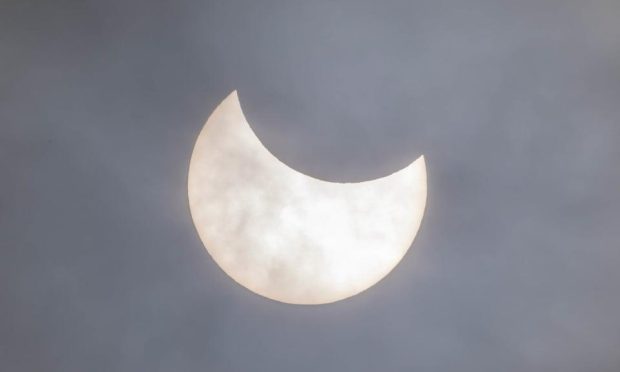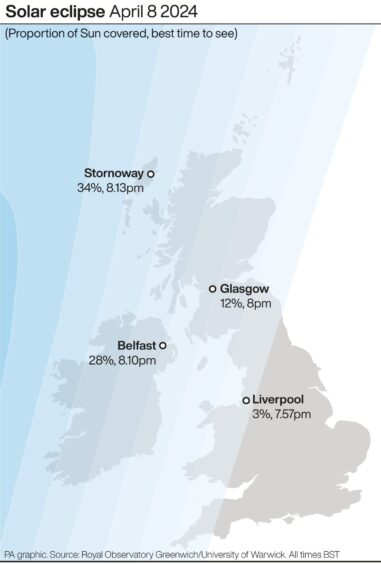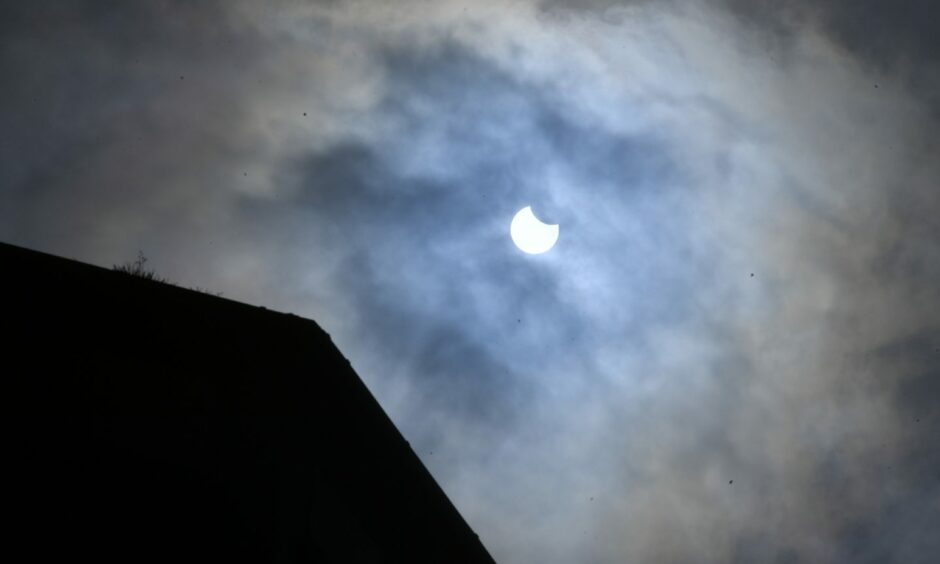A partial solar eclipse could be visible across the north and north-east on Monday night.
While parts of North America will be plunged into darkness during the first solar eclipse of the year, only a partial eclipse will occur in the UK.
Stornoway is expected to be the best location for views of the phenomenon with more than a third of the sun covered by the moon.
A total solar eclipse occurs when the sun and moon align with the Earth which temporarily blocks the sun’s light.
With only part of the sun covered during a partial solar eclipse, it will appear as though the moon has “taken a bite out of the sun” – displayed as a crescent in the sky.
When will the partial solar eclipse be visible?
The partial solar eclipse will be visible in Scotland from about 7.50pm until the sun sets.
The weather is forecast to be mainly clear in the Western Isles which will give those in the area a better chance of catching a glimpse of the spectacle.
It has been predicted only 4.3% of the sun will be obscured in Aberdeen and 16% in Inverness. The weather is also more likely to be cloudy with drizzle in these areas.
The best time for maximum visibility differs across Aberdeenshire, Moray, the Highlands and islands:
- Aberdeen – 8pm
- Stonehaven – 8pm
- Peterhead – 7.59pm
- Aboyne – 8.02pm
- Ballater – 8.07pm
- Ellon – 8pm
- Buckie – 8.04pm
- Elgin – 8.05pm
- Forres – 8.06pm
- Lossiemouth – 8.05pm
- Inverness – 8.09pm
- Ullapool – 8.13pm
- Portree – 8.13pm
- Aviemore – 8.07pm
- Thurso – 8.08pm
- Stornoway – 8.13pm
- Kirkwall – 8.07pm
- Lerwick – 8.02pm
How to safely view the eclipse
The usual rules about not looking directly at the sun also apply with the partial solar eclipse.
Solar eclipse glasses, which reduce the brightness of the sun, are available but people can also use pinhole projection or make a pinhole camera.
Pinhole projection involves making a hole in a piece of card, holding it under the sun and holding a piece of paper behind the card.
The cheaper option is considered the most convenient way to view the event and allows people to view the shape of the sun projected onto the paper instead of looking directly at the light.


